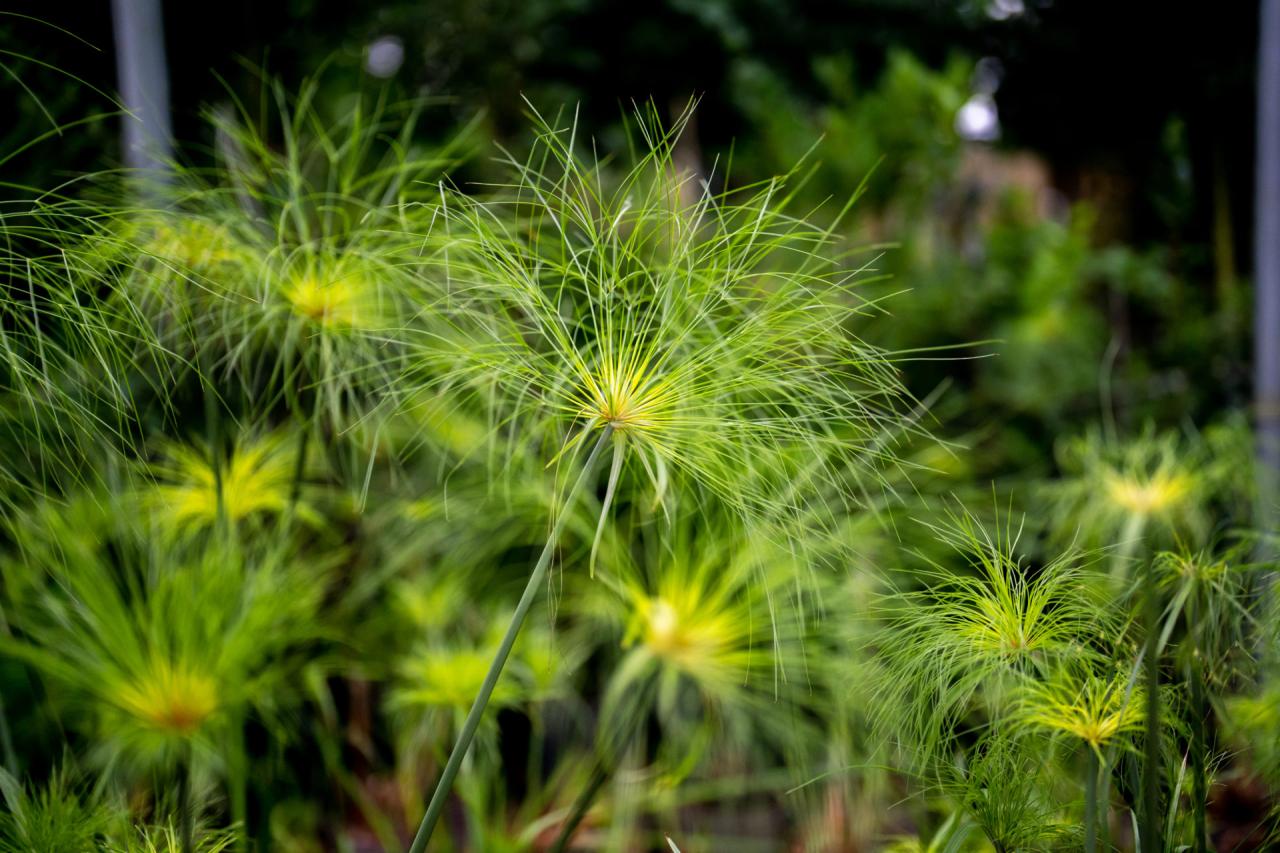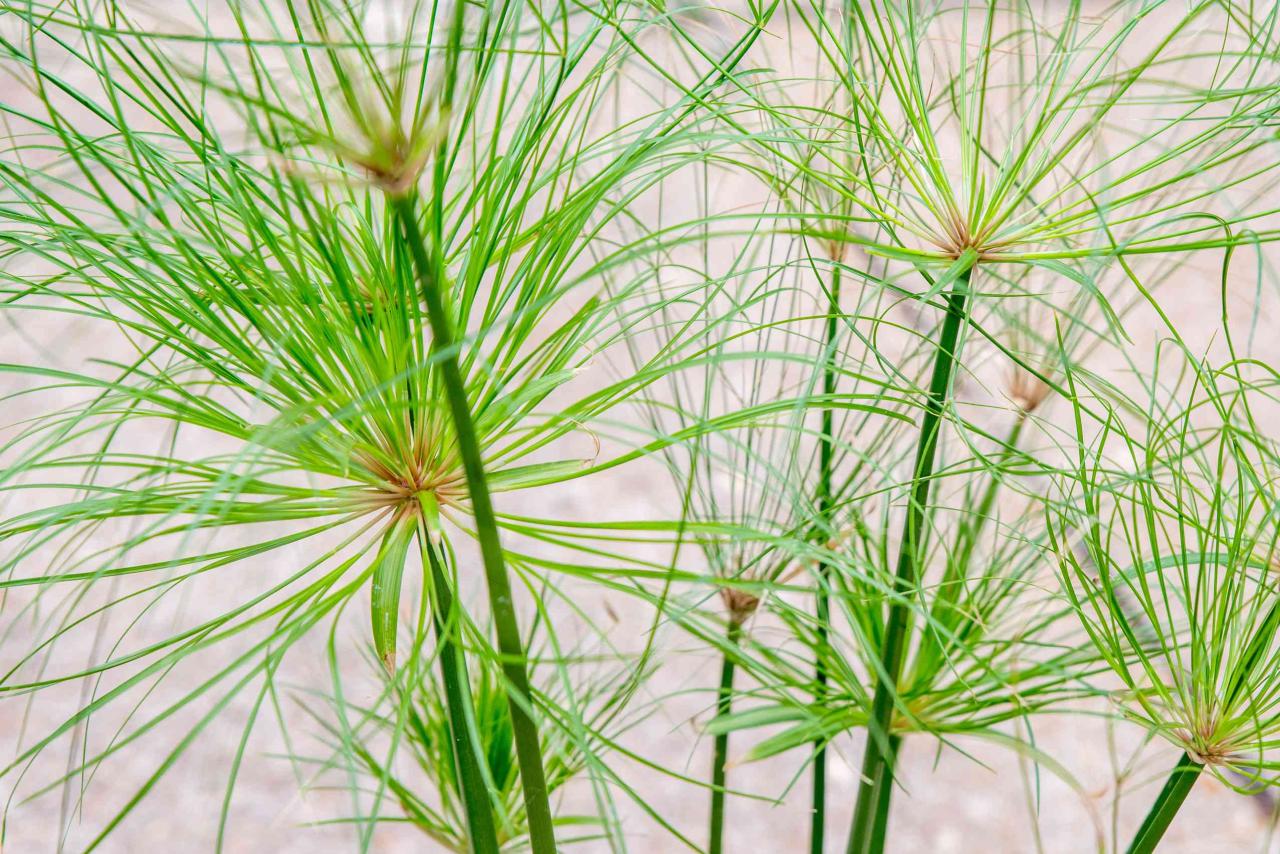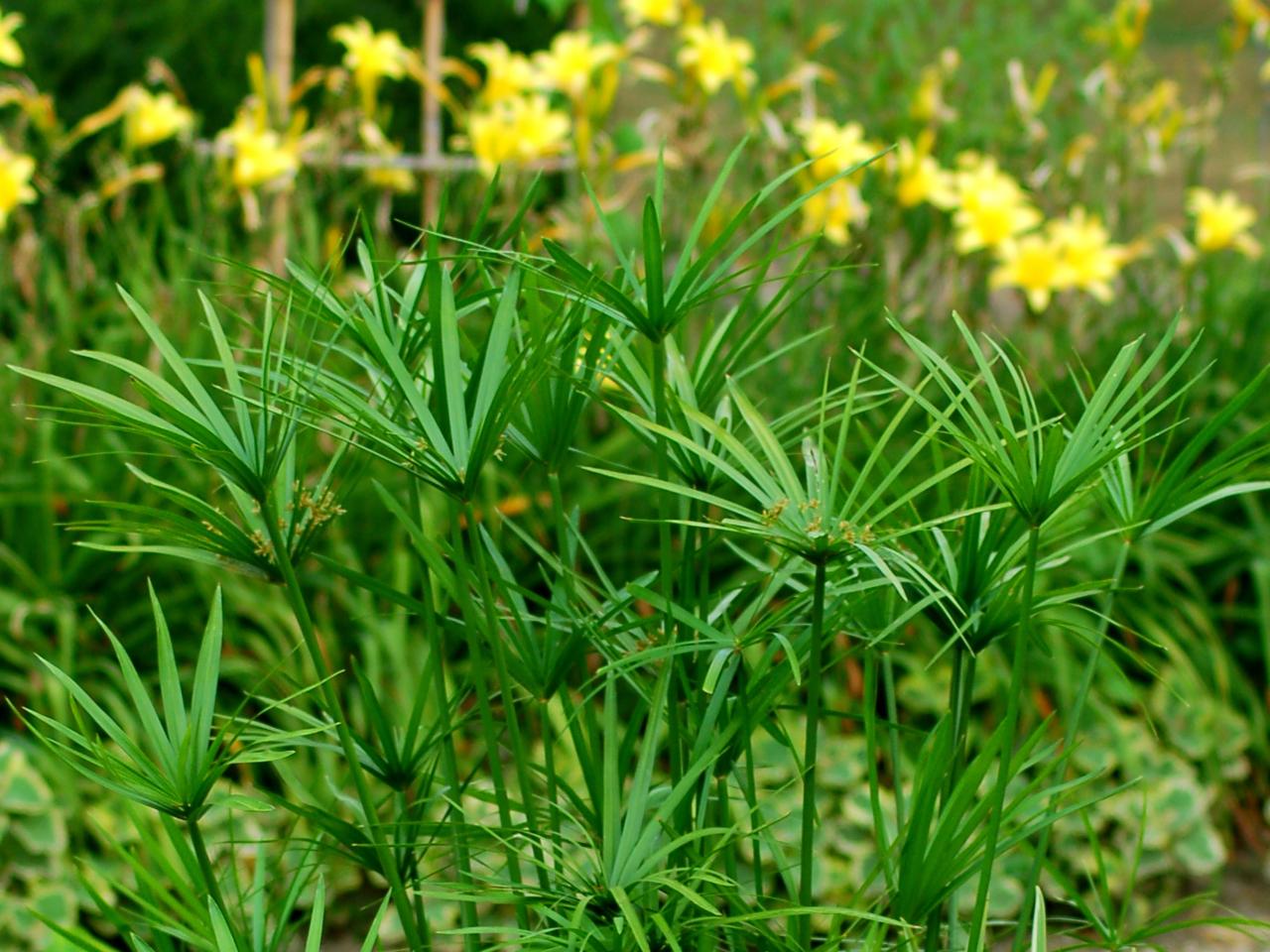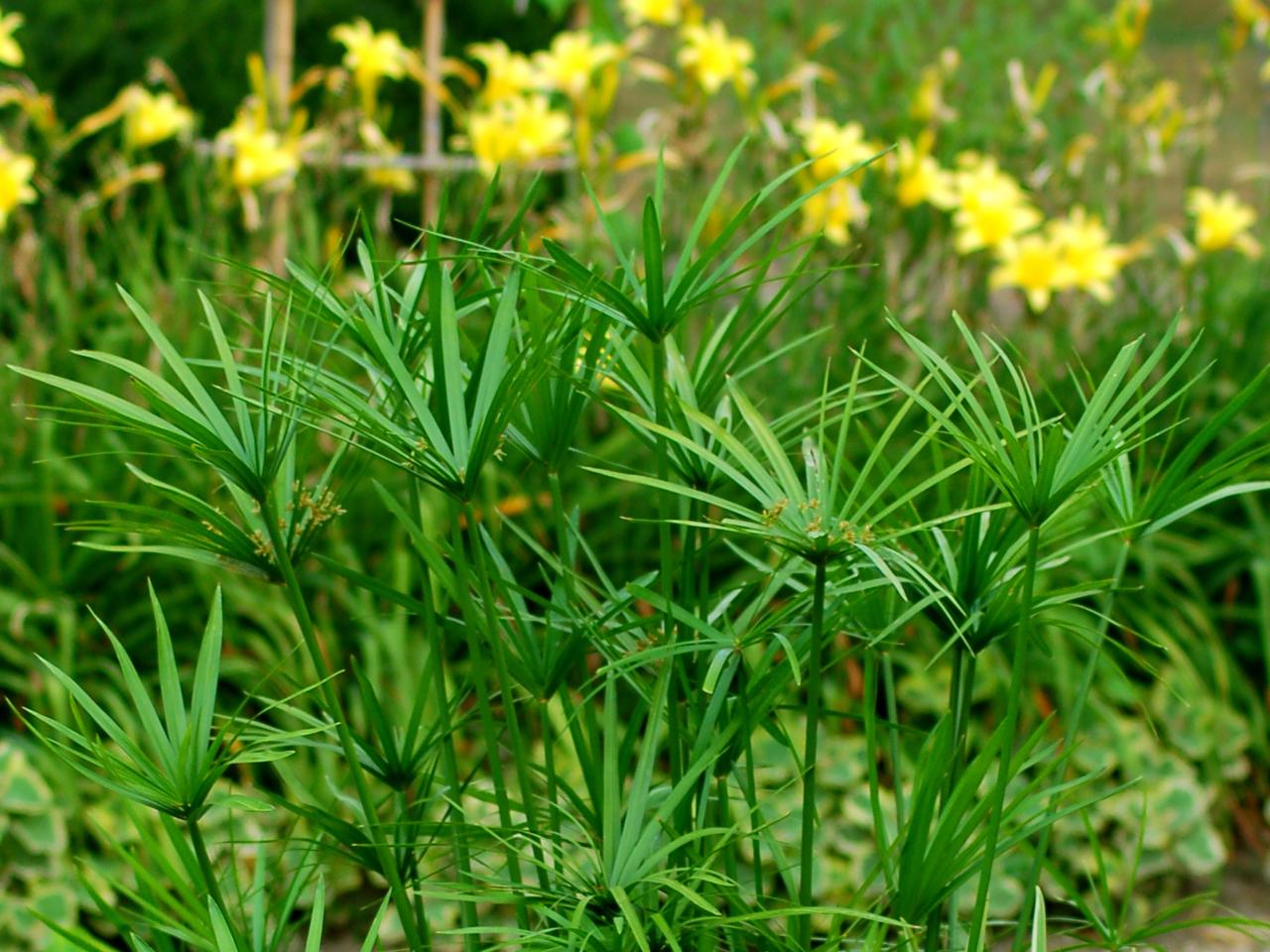Papyrus Plant 101: How to Grow and Care for This Unique and Stunning Plant – you’ve likely seen this striking plant gracing water features and gardens, but did you know its history stretches back to ancient Egypt? This remarkable plant, with its towering stalks and feathery plumes, has been used for centuries, from crafting paper to creating intricate decorations.
This guide delves into the fascinating world of papyrus plants, covering everything from their origins and growing conditions to care tips and uses.
The papyrus plant (Cyperus papyrus) is a tall, perennial sedge native to the wetlands of Africa. It’s known for its distinctive, umbrella-shaped clusters of leaves that emerge from a central stalk, giving it a striking and exotic appearance.
Introduction to the Papyrus Plant
The papyrus plant, scientifically known asCyperus papyrus*, is a unique and striking plant that has a rich history and cultural significance. It’s a perennial herb native to the wetlands and marshes of Africa, particularly in the Nile River valley, and has been used for centuries for various purposes.
While papyrus plants thrive in moist, sunny environments, they also require well-draining soil to prevent root rot. Just like with roses, proper soil and drainage are key to healthy growth. If you’re looking to expand your garden with more vibrant blooms, consider learning how to propagate roses from cuttings – a rewarding process that allows you to create a beautiful, fragrant garden.
Check out this informative guide on How To Propagate Roses From Cuttings: Create a Blooming Garden Full of Color to learn more. Back to papyrus, once established, these unique plants can reach impressive heights, adding a touch of tropical elegance to any space.
Botanical Classification and Origin
The papyrus plant belongs to theCyperaceae* family, which includes sedges. It is a tall, grass-like plant that can grow up to 5 meters (16 feet) in height. Its distinctive features include its triangular stem, which is hollow and reed-like, and its feathery, umbrella-like clusters of leaves.
The papyrus plant thrives in areas with abundant water and sunlight, making it a natural inhabitant of wetlands and riverbanks.
Historical Uses and Significance
The papyrus plant has played a significant role in ancient Egyptian civilization and beyond. Its most famous use was in the production of papyrus paper, which was used for writing, record-keeping, and religious texts. The Egyptians developed a sophisticated process for making papyrus paper, which involved stripping the plant’s stem, layering the strips, and pressing them together to form a durable sheet.
Papyrus paper was also used for other purposes, such as mats, baskets, sandals, and even boats.
Growing Conditions for Papyrus Plants: Papyrus Plant 101: How To Grow And Care For This Unique And Stunning Plant
Papyrus plants thrive in specific conditions that mimic their natural habitat. Understanding these requirements is essential for cultivating healthy and vigorous papyrus plants.
Just like the papyrus plant thrives in moist environments, so too does the kaffir lime tree flourish in warm, humid climates. For those seeking to add a touch of the tropics to their garden, The Ultimate Kaffir Lime Leaf Guide: From Growing to Cooking with This Aromatic Herb offers a comprehensive guide on cultivating this fragrant herb.
Whether you’re a seasoned gardener or a beginner, the papyrus plant’s striking silhouette and the kaffir lime’s aromatic leaves are sure to add a unique flair to your outdoor space.
Light Requirements
Papyrus plants prefer bright, indirect light. While they can tolerate some direct sunlight, especially in the early morning or late afternoon, prolonged exposure to intense sun can scorch their leaves. Ideal locations include near a window that receives plenty of natural light, but not direct sunlight.
Temperature
Papyrus plants are best grown in warm temperatures. They thrive in temperatures between 65°F and 85°F (18°C and 29°C). During the winter months, temperatures should not drop below 55°F (13°C). Avoid exposing papyrus plants to sudden temperature changes, as this can stress them.
Soil Requirements
Papyrus plants require a well-draining soil that retains some moisture. A suitable potting mix can be made with a combination of peat moss, perlite, and compost. The soil should be slightly acidic, with a pH range of 6.0 to 6.5.
Planting and Propagation
Papyrus plants can be grown from seeds or propagated through division. While both methods are relatively straightforward, understanding the nuances of each will ensure success in establishing a thriving papyrus plant in your home or garden.
Planting Papyrus Seeds
Papyrus seeds are best sown during the spring or summer months when temperatures are warm and consistent. This allows for optimal germination and growth. To plant papyrus seeds, follow these steps:
- Choose a suitable container or location:Papyrus plants prefer moist, well-drained soil. Select a container with drainage holes or a location in your garden that offers adequate drainage.
- Prepare the planting medium:Fill the container or garden bed with a mixture of potting soil and perlite or sand to improve drainage.
- Sow the seeds:Scatter the papyrus seeds evenly across the surface of the soil. Do not bury the seeds too deeply, as they need sunlight to germinate. A light dusting of soil is sufficient.
- Water thoroughly:After planting, water the soil gently to ensure the seeds are adequately moistened.
- Provide warmth and humidity:Maintain a warm and humid environment for the seeds to germinate. Cover the container with a plastic dome or wrap to create a mini-greenhouse effect.
- Maintain moisture:Keep the soil consistently moist, but not waterlogged.
- Provide adequate light:Papyrus plants require bright, indirect light. Place the container in a sunny location, but avoid direct sunlight, which can scorch the delicate seedlings.
- Thin seedlings:Once the seedlings have developed a few true leaves, thin them out to give each plant ample space to grow.
Propagating Papyrus Plants Through Division
Dividing papyrus plants is a simple and effective method for increasing your plant collection. This process involves separating the plant’s rhizomes, which are underground stems that produce new shoots.
- Choose the right time:The best time to divide papyrus plants is during the spring or early summer when the plants are actively growing.
- Prepare the plant:Gently remove the papyrus plant from its container or garden bed.
- Divide the rhizomes:Carefully separate the rhizomes, ensuring each division has at least one healthy growth point.
- Replant the divisions:Plant the divisions in separate containers or in your garden, ensuring each division has adequate space to grow.
- Water thoroughly:Water the newly planted divisions thoroughly to help them establish themselves.
Transplanting Papyrus Plants
Transplanting papyrus plants can be done during the spring or early summer. Here’s a step-by-step guide:
- Prepare the new location:Select a sunny location with well-drained soil.
- Dig a hole:Dig a hole that is twice the width and depth of the plant’s root ball.
- Remove the plant:Gently remove the papyrus plant from its container or garden bed.
- Loosen the roots:Gently loosen the roots to encourage them to spread out in the new location.
- Place the plant in the hole:Place the papyrus plant in the hole, ensuring the top of the root ball is level with the surrounding soil.
- Fill the hole with soil:Backfill the hole with soil, gently pressing it down around the roots.
- Water thoroughly:Water the newly transplanted plant thoroughly to help it establish itself.
Caring for Your Papyrus Plant

Providing proper care is essential for the healthy growth and longevity of your papyrus plant. This section will guide you through the key aspects of caring for your papyrus plant, including watering, fertilization, and pruning techniques.
Watering Needs
Papyrus plants thrive in moist environments, similar to their natural habitat along water bodies. Proper watering is crucial for their well-being.
- Frequency:Water your papyrus plant regularly, ensuring the soil remains consistently moist but not waterlogged. The frequency of watering depends on factors like the size of the pot, the type of soil, and the ambient temperature. As a general guideline, water your papyrus plant when the top inch of soil feels dry to the touch.
- Water Quality:Use room temperature water for watering your papyrus plant. Avoid using cold water as it can shock the plant’s roots. Chlorine and other chemicals present in tap water can also harm the plant. If possible, use filtered or rainwater for watering.
Fertilization
Papyrus plants are relatively heavy feeders and benefit from regular fertilization.
- Importance:Fertilization provides essential nutrients that promote healthy growth, lush foliage, and strong stems.
- Fertilizer Recommendations:Use a balanced liquid fertilizer diluted to half strength every two weeks during the growing season (spring and summer). Avoid fertilizing during the winter months when the plant’s growth slows down.
Pruning
Pruning your papyrus plant helps maintain its shape, encourage bushier growth, and remove any dead or diseased foliage.
- Techniques:Use sharp, clean pruning shears to remove any dead, damaged, or overgrown stems. You can also prune the plant to maintain a desired shape or height. Pinch off the top growth of stems to encourage branching and bushier growth.
- Timing:Prune your papyrus plant during the spring or early summer before the plant enters its active growth phase.
Common Pests and Diseases
Papyrus plants are generally hardy and resistant to pests and diseases, but they can still be susceptible to certain issues, especially in less-than-ideal growing conditions. Recognizing and addressing these problems early can help prevent serious damage and maintain the health of your papyrus plant.
Pests
Pests that can affect papyrus plants are usually attracted to the plant’s juicy stems and leaves. Identifying and addressing these issues promptly is crucial to prevent widespread damage.
- Aphids:These tiny, soft-bodied insects can suck sap from the plant, causing leaf curling, yellowing, and stunted growth. They can also secrete a sticky substance called honeydew, which attracts other pests like ants and mold.
- Mealybugs:These insects are covered in a white, cottony wax and feed on plant sap. They can cause similar damage to aphids, and their presence can be easily identified by the white, fluffy patches on the plant.
- Spider mites:These tiny arachnids are difficult to see with the naked eye but can cause significant damage to papyrus plants. They feed on plant sap, leaving behind small, yellow spots on the leaves. Heavy infestations can cause leaves to turn brown and drop off.
- Scale insects:These insects are often mistaken for bumps or growths on the plant. They attach themselves to the stems and leaves, sucking sap and causing discoloration and stunted growth.
Preventing and Controlling Pest Infestations
- Regular inspection:Regularly inspecting your papyrus plant for signs of pests is crucial for early detection and treatment. Pay attention to the leaves, stems, and undersides of the plant for any signs of damage or infestation.
- Proper watering and fertilization:Maintaining optimal growing conditions by providing adequate water and nutrients can help strengthen the plant and make it less susceptible to pests. Overwatering or under-fertilizing can weaken the plant and make it more vulnerable.
- Isolation:If you suspect your papyrus plant has pests, isolate it from other plants to prevent the spread of infestation. This helps contain the problem and prevents further damage to your other plants.
- Natural remedies:Insecticidal soap or neem oil can be effective in controlling pests. These products are relatively safe for use around plants and pets, but always follow the manufacturer’s instructions carefully.
- Beneficial insects:Introducing beneficial insects like ladybugs or lacewings to your garden can help control pests naturally. These insects prey on aphids and other pests, helping to keep your papyrus plant healthy.
Diseases
Papyrus plants are generally resistant to diseases, but they can be susceptible to certain fungal and bacterial infections, particularly in humid environments or with poor drainage.
- Root rot:This fungal disease occurs when the soil is constantly wet, leading to root decay and ultimately killing the plant. Symptoms include wilting, yellowing leaves, and a foul odor from the soil.
- Leaf spot:This fungal disease causes brown or black spots on the leaves, which can eventually spread and cause the leaves to turn yellow and drop off.
- Bacterial blight:This bacterial disease causes brown, mushy spots on the leaves and stems, which can spread rapidly and lead to the death of the plant.
Addressing Diseases
- Proper drainage:Ensuring proper drainage is crucial to prevent root rot. Repot the plant in a well-draining potting mix and avoid overwatering.
- Fungicides:If your papyrus plant shows signs of fungal disease, you can use a fungicide to treat the infection. Always follow the manufacturer’s instructions carefully and use a fungicide specifically designed for plants.
- Remove infected parts:Remove any infected leaves or stems to prevent the spread of disease. Dispose of the infected plant material properly to avoid contaminating other plants.
- Avoid overwatering:Allow the soil to dry out slightly between waterings to prevent root rot.
Papyrus Plant Uses

The papyrus plant, with its striking appearance and rich history, has been valued for centuries for its versatility and cultural significance. From its ancient use in papermaking to its contemporary applications in home decor and landscaping, the papyrus plant continues to play a vital role in various aspects of human life.
Historical Uses of Papyrus
The papyrus plant’s historical uses are deeply intertwined with the development of ancient civilizations. The most renowned application was in papermaking. Ancient Egyptians, known for their advanced writing system, discovered that the plant’s fibrous stem could be processed into a durable and flexible material suitable for writing.
This invention, known as papyrus, revolutionized communication and record-keeping in the ancient world.
- Papermaking:The Egyptians developed a meticulous process for transforming the papyrus plant into sheets of writing material. They would strip the outer layers of the stem, cut it into thin strips, and lay them crosswise in overlapping layers. These layers were then pressed together, moistened, and allowed to dry, resulting in a smooth and durable surface suitable for writing.
Papyrus scrolls, containing everything from religious texts to legal documents, provide invaluable insights into ancient Egyptian civilization.
- Other Crafts:Beyond papermaking, the papyrus plant found applications in various crafts. Its strong fibers were used to create mats, baskets, sandals, and even ropes. The plant’s hollow stems were also utilized as water pipes and containers. The versatility of papyrus made it an essential resource for ancient Egyptians.
Contemporary Uses of Papyrus, Papyrus Plant 101: How to Grow and Care for This Unique and Stunning Plant
While the use of papyrus as writing material has largely been replaced by modern paper, the plant continues to hold relevance in contemporary society.
- Ornamental Purposes:The papyrus plant’s striking appearance and tropical aesthetic make it a popular choice for ornamental purposes. Its tall, feathery stems and lush green foliage add a touch of elegance and exoticism to homes, gardens, and water features. Papyrus plants are often used in terrariums, aquariums, and as decorative elements in modern interior design.
- Cultural Traditions:Papyrus continues to play a significant role in cultural traditions. In some cultures, it is used in religious ceremonies and rituals. For example, in ancient Egypt, papyrus was used to create sacred scrolls and offerings to the gods. Today, papyrus is still used in certain religious practices, particularly in regions where its cultivation is prevalent.
- Environmental Benefits:Papyrus plants are known for their ability to filter water and improve water quality. They are often used in bioremediation projects to remove pollutants from water bodies. Their extensive root systems help stabilize soil and prevent erosion, making them valuable in wetland restoration efforts.
Incorporating Papyrus Plants into Home Decor and Landscaping
The papyrus plant’s versatility allows for its integration into various home decor and landscaping styles.
- Indoor Decor:Papyrus plants thrive in bright, indirect light and can be grown indoors in pots or containers. Their tall stems and feathery foliage add a touch of verticality and texture to living spaces. They can be placed in corners, near windows, or as a centerpiece on a table.
Papyrus plants can also be incorporated into terrariums or aquariums for a unique and visually appealing display.
- Outdoor Landscaping:In warm climates, papyrus plants can be grown outdoors in water gardens, ponds, or along the edges of streams. Their lush foliage provides a natural screen and adds a tropical touch to the landscape. Papyrus plants can also be used to create focal points in gardens or to add a touch of drama to water features.
Conclusive Thoughts

Cultivating a papyrus plant can be a rewarding experience, bringing a touch of ancient history and natural beauty to your home or garden. From its simple care requirements to its versatility in design, the papyrus plant offers a unique and captivating addition to any space.
Whether you’re an experienced gardener or a beginner, this guide provides all the information you need to successfully grow and enjoy this remarkable plant.
Helpful Answers
Can I grow a papyrus plant indoors?
Yes, papyrus plants can thrive indoors as long as they receive bright, indirect light and are kept in a humid environment.
How often should I fertilize my papyrus plant?
Fertilize your papyrus plant every 2-4 weeks during the growing season with a balanced liquid fertilizer diluted to half strength.
Can I prune my papyrus plant?
Yes, you can prune your papyrus plant to maintain its shape and encourage new growth. Remove any dead or yellowing leaves and trim back any overly long stalks.
What are some other uses for papyrus plants?
Besides their ornamental value, papyrus plants can be used for crafting, weaving, and even making paper. They also play a role in traditional medicine and cultural practices in some regions.
